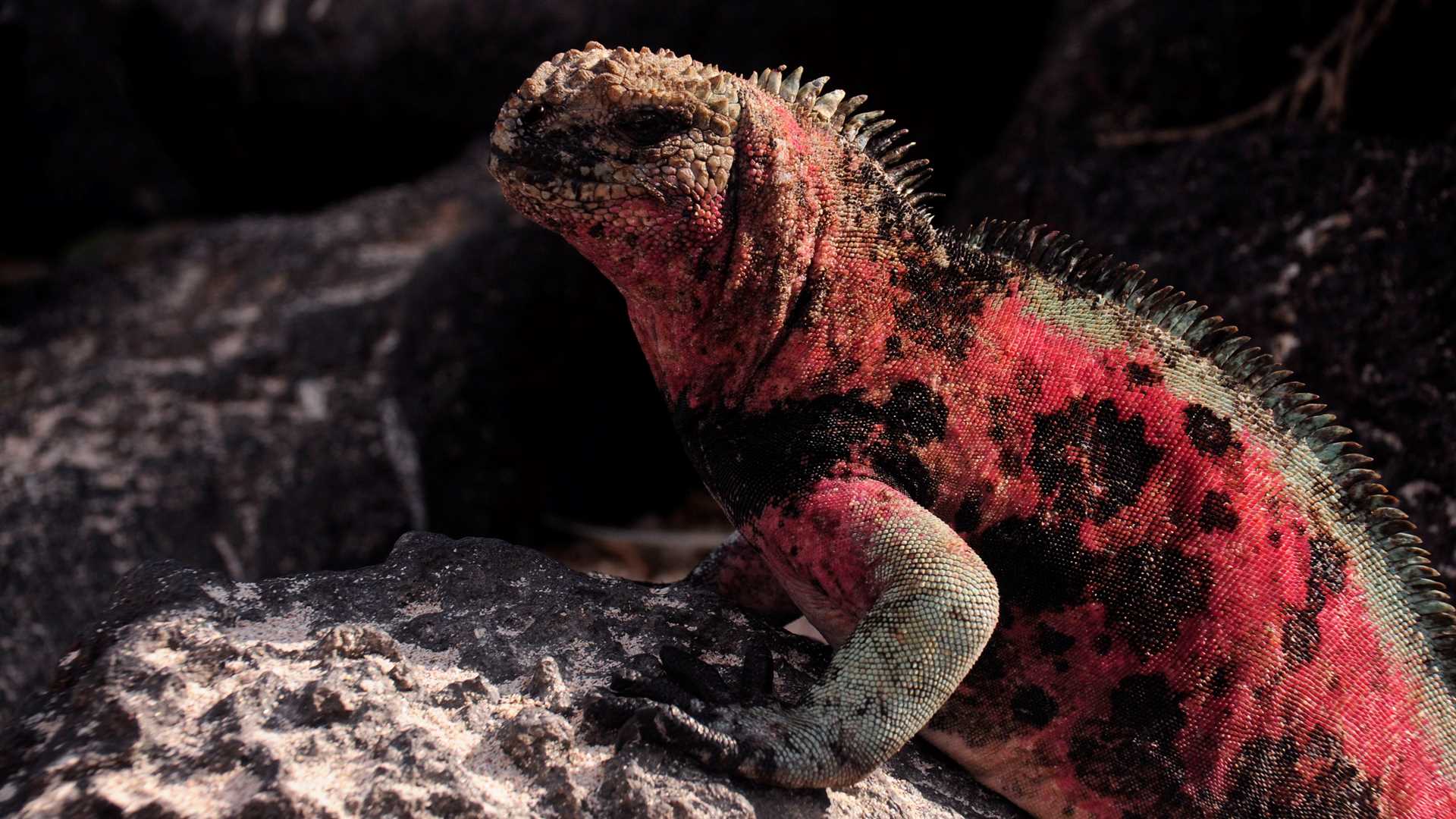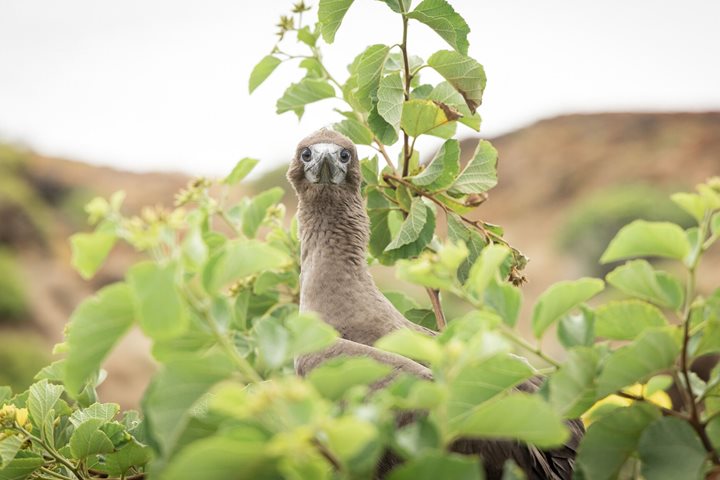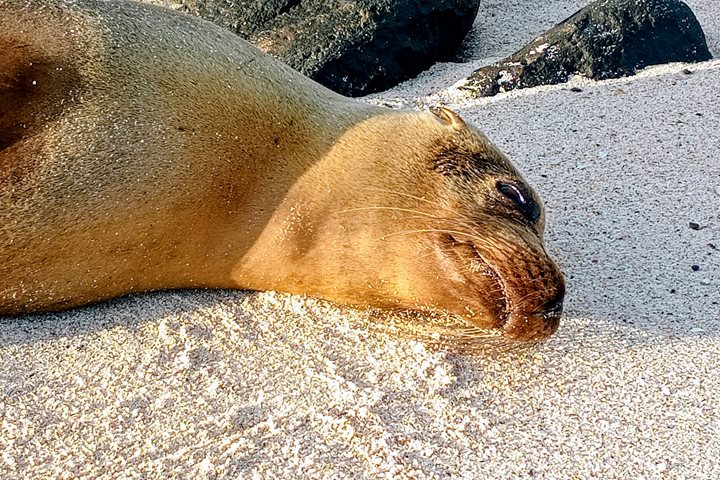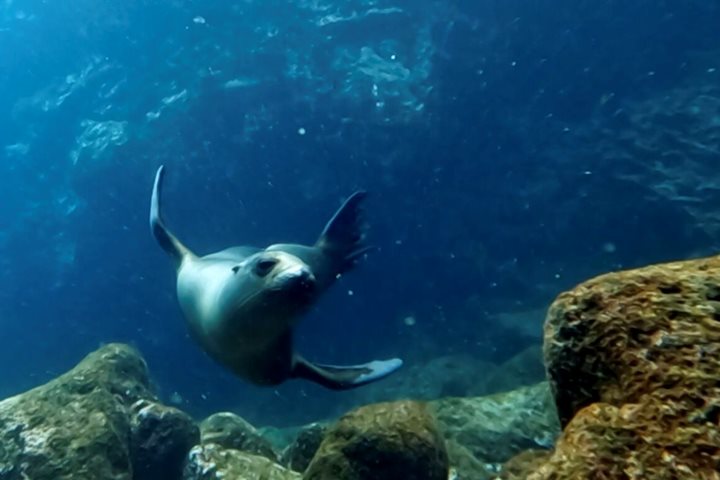Our morning began in a beautiful bay with azure waters and basalt rocky islets nearby. Before breakfast, we explored the foamy shores on kayaks and paddleboards, discovering an amazing intertidal fauna along with sea lions and sea turtles. We disembarked on a long coraline beach to rest and walk among dozens of sea lions from a nearby breeding colony. We sat among the sea lions and watched them. Some had just arrived from a long fishing adventure, others were waking up from a siesta. Right afterward, we went deep water snorkeling in Gardner Islet. We enjoyed being in the water with playful sea lions, colorful fish and a Pacific green sea turtle.
After lunch, we dropped anchor on the western side of the island, called Punta Suarez. I was very fortunate to lead the long hike. We spotted blue-footed boobies and walked by the nesting ground of Nazca boobies. Near the end of the hike, we observed from a close distance the archipelago’s top predator, the Galapagos hawk. It was a fantastic day on the oldest island of the Galapagos.







